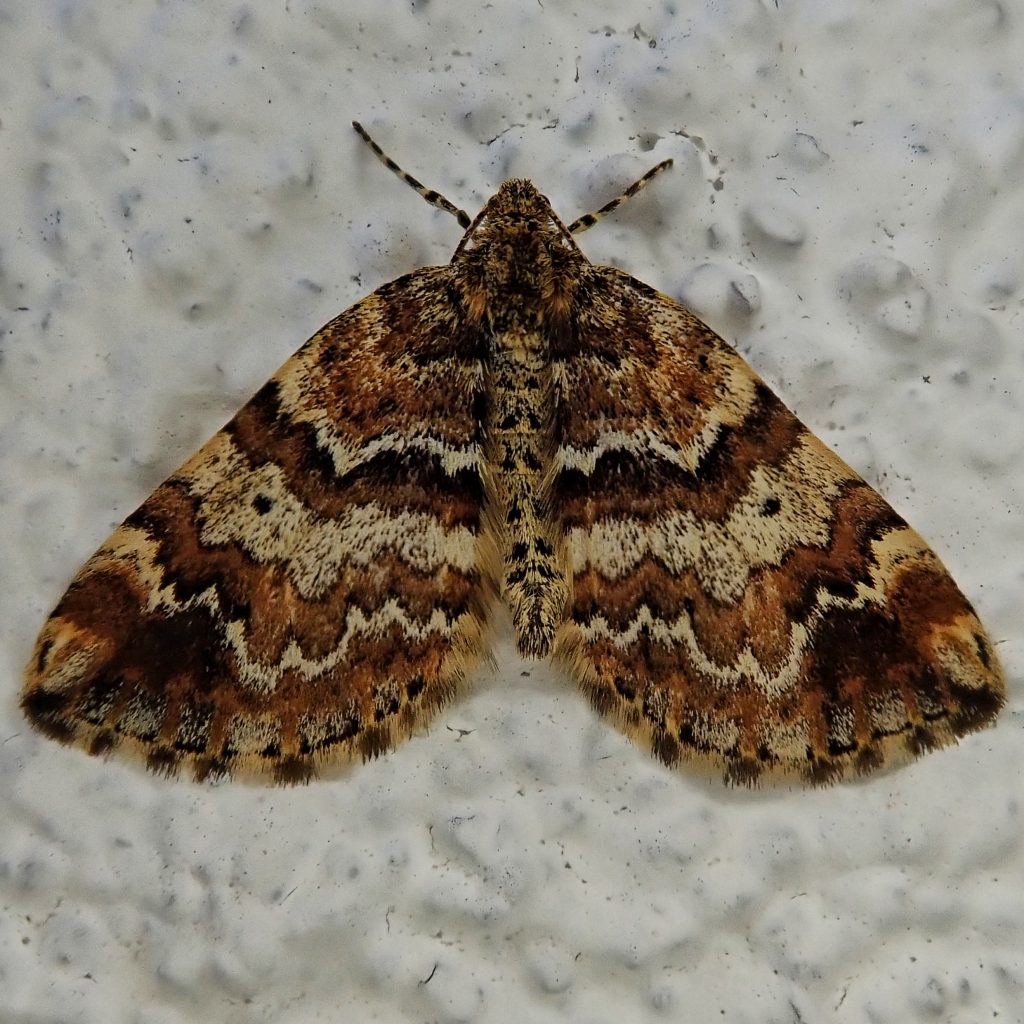
There are many flowering plants that are considered to be harbingers of spring. The Oemleria cerasiformis (Osoberry) that I recently profiled is my personal yardstick. There are even a few, mostly cultivars, which go by the common name of Spring heralds, or something similar. But for me the truest sign that spring is near is my first sighting of the diurnal (day flying) moth Enchoria lacteata. I also found the first of these on March 11 last year. But this was a much easier photographic capture.
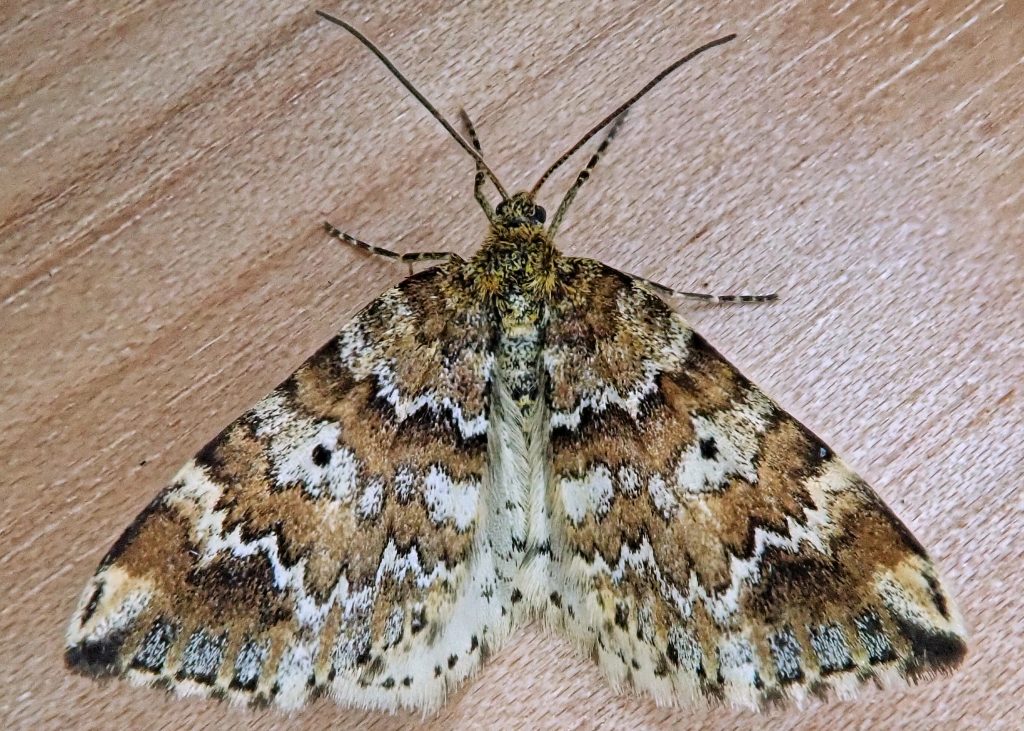
These small but beautiful moths are not prone to sitting still within camera range. Last year, after dozens of photos which were either blurry, or documented the spot a moth had just departed, I netted, refrigerated, and photographed one. This year I was simply waiting for a client (she of the generous nature and mossy courtyard) when I spied an environmentally refrigerated Enchoria lacteata on a nearby wall, which didn’t even twitch as I took several photos with my TG5, which I had fortuitously thought to bring to work.
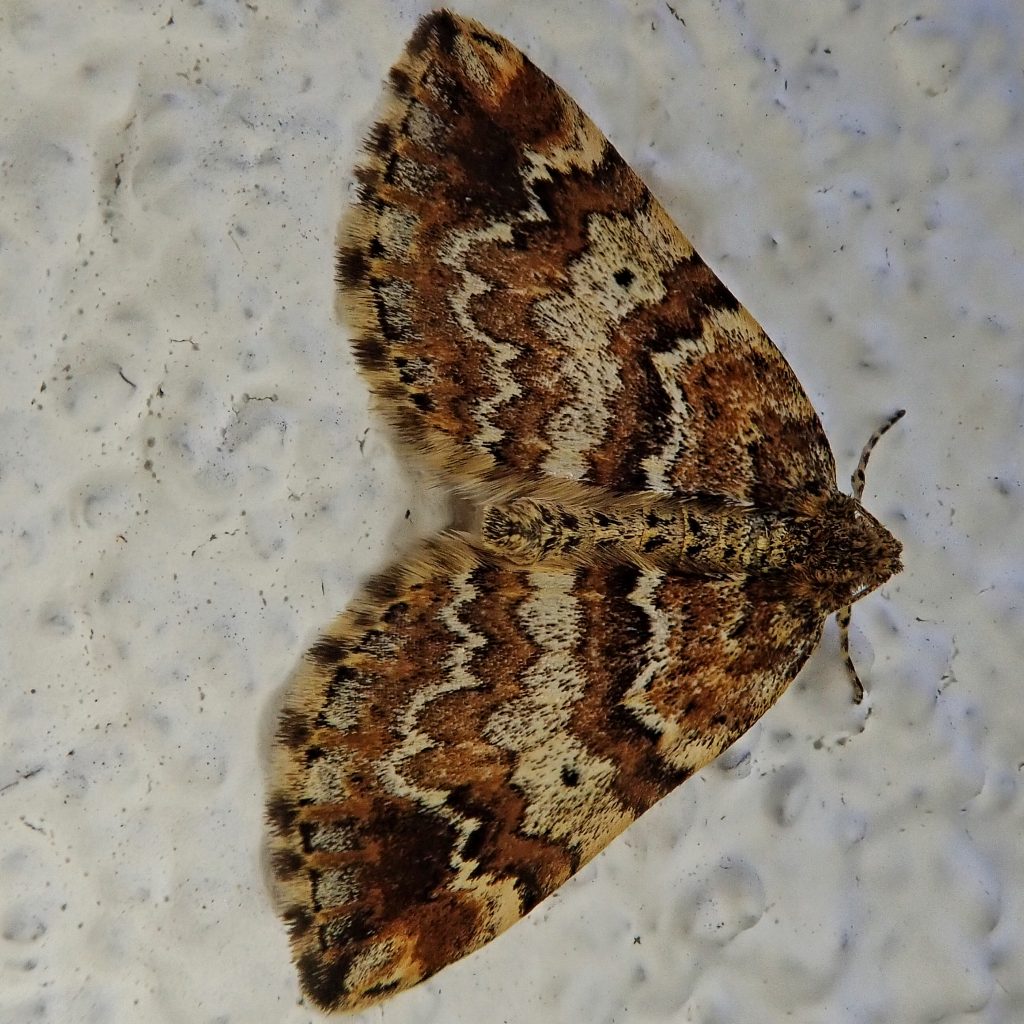
These moths manage their late winter emergence by being strongly tied to some early blooming native plants for nectar and as larval hosts, in particular Petasites frigidus (coltsfoot) which blooms before it leafs out, often beginning in February at lower elevations, and immediately following snowmelt in the mountains. They also utilize various Claytonia and Montia spp. (miner’s lettuce) which start blooming just before the coltsfoot ends.
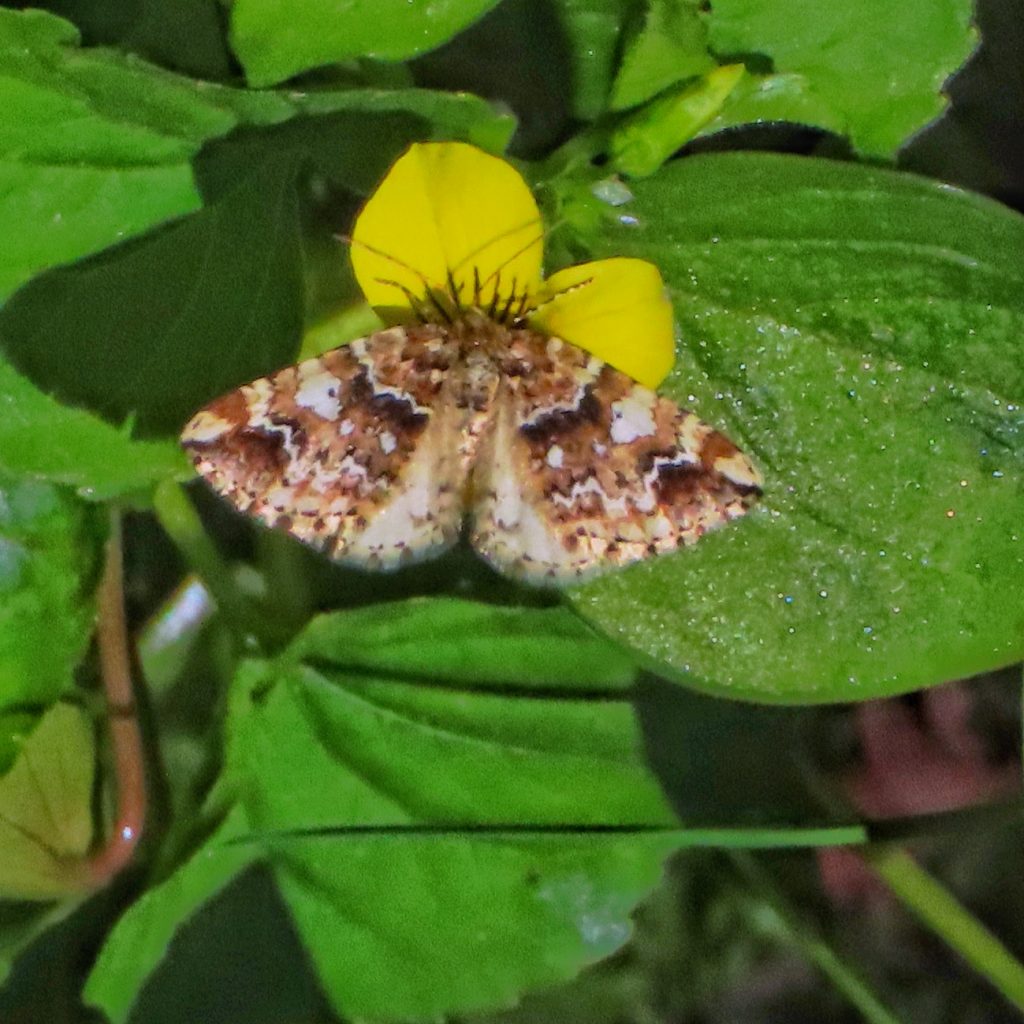
Geometridae can be difficult to identify, because many species share the similar patterning (maculation) of multiple transverse bands of differing color, bordered by zigzagging to scalloped lines. Even after a couple of years of moth mania I am still hesitant to label most species without running them through my identification process.
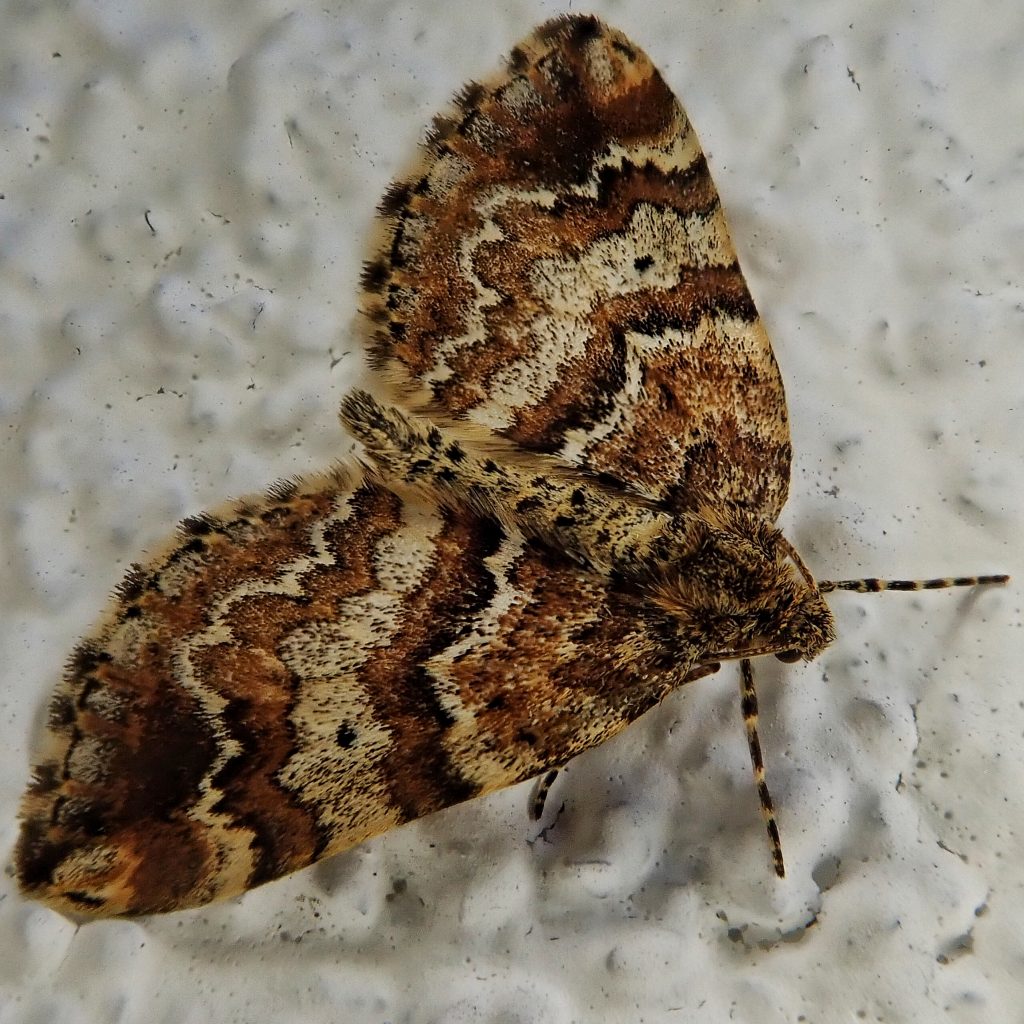
That process consists of first getting good, clear photos, preferably several, and preferably showing at least some of the hindwing (which is often a real challenge). Then I upload them to an identification app, which will usually give me some options. I prefer LepSnap (which also has other field guide apps), but the Seek app will work for certain moths, although it’s nowhere near as complete.
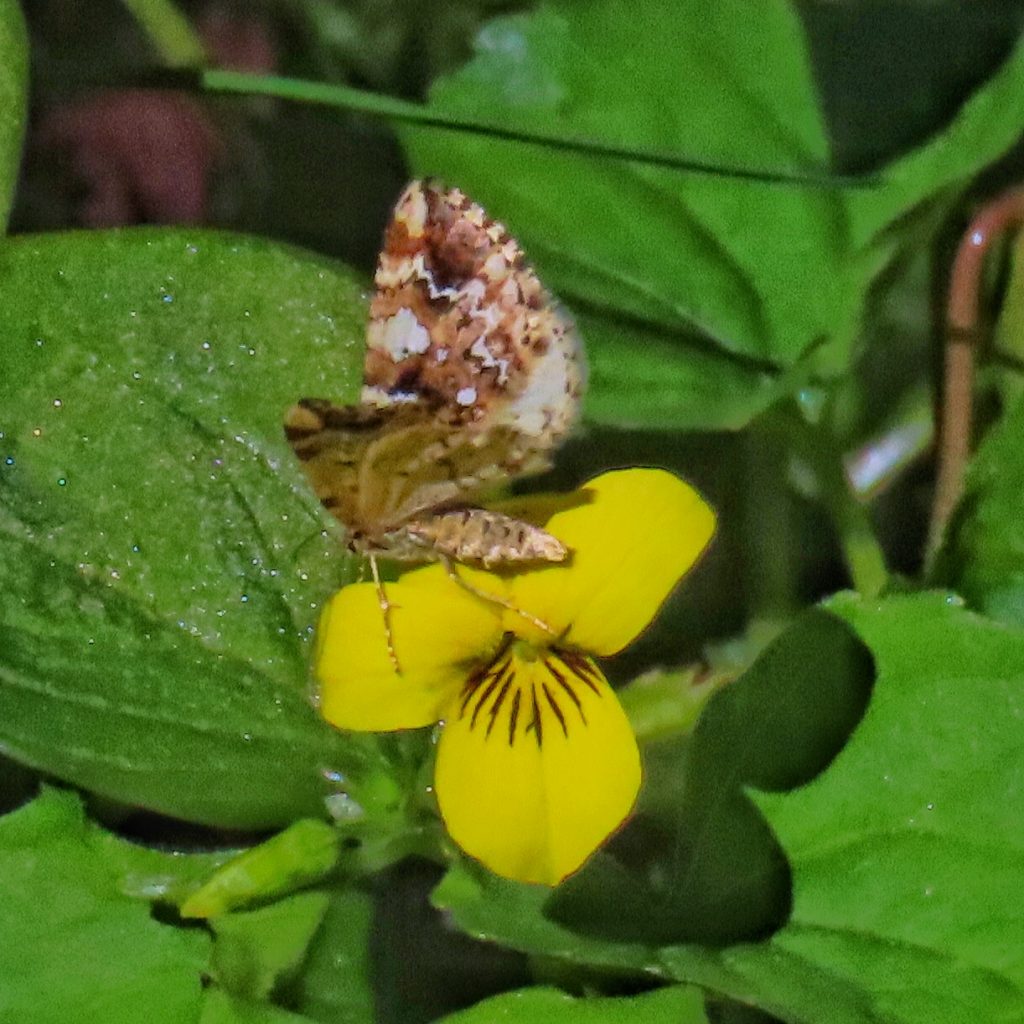
Now comes the sometimes fun, and sometimes tedious task of getting out my books, and googling the likely suspects. The links that come up for Moth Photograpers Group and BugGuide are usually the most helpful, especially since their pages often contain additional links. Then I compare photos, descriptions, habitats, and flight seasons until I come to a conclusion.
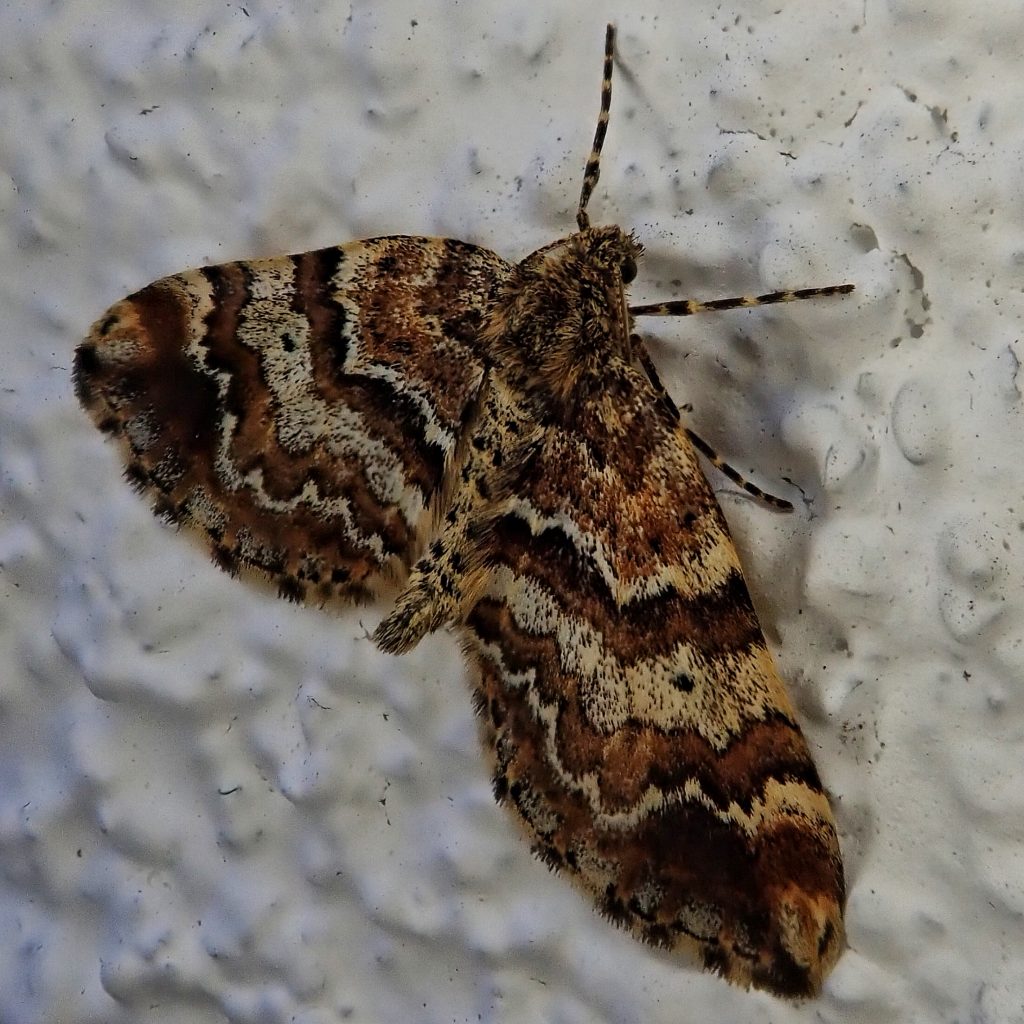
And then, unless I have enough experience with that species to confer a level of certainty, I usually send an email to one of my moth mentors and ask them to vet it. More and more, as I’ve become better at this, they agree with me, but it is far from rare that I get gobsmacked for my errors. The whole process can take anywhere from a few minutes to a few days, but when I’m done I have always learned things. Retaining that knowledge is the next challenge.
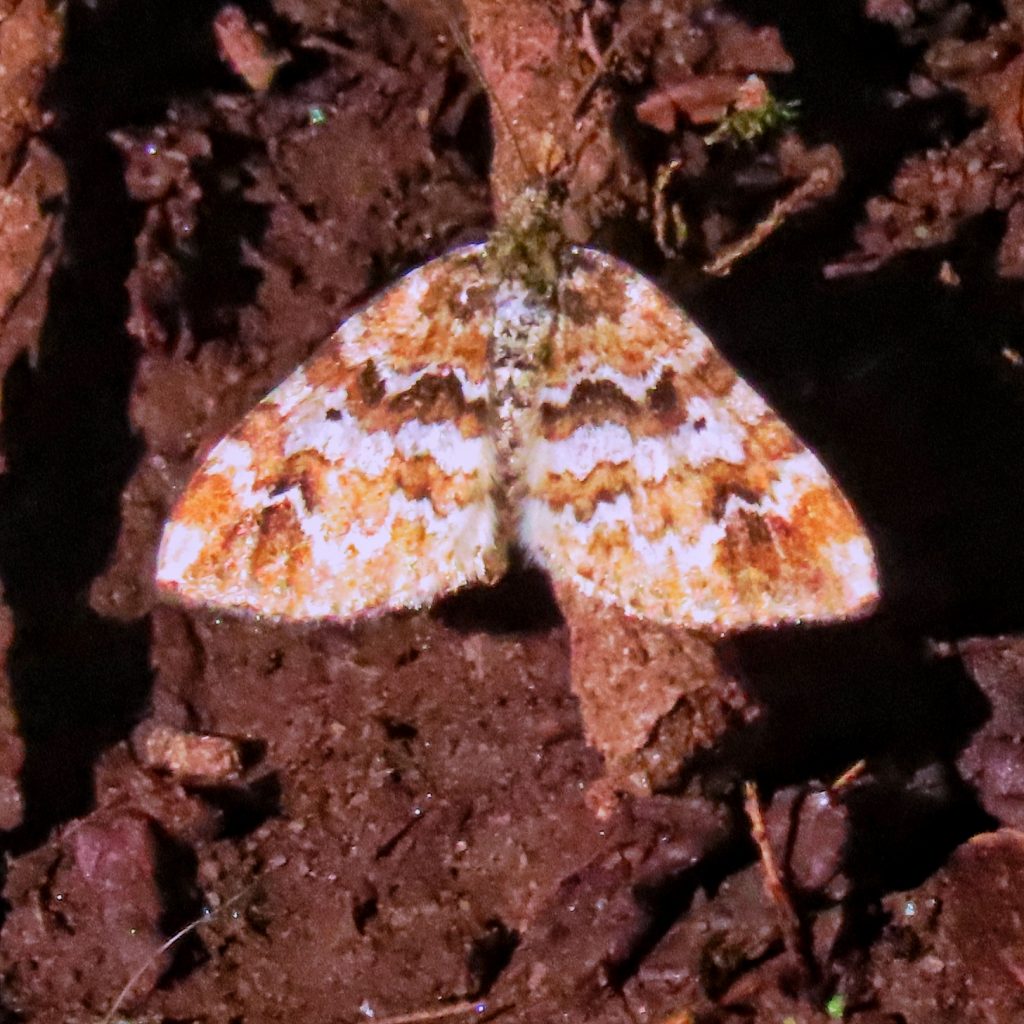
Description– Small (fw length 9-11mm), with irregular, zigzag, transverse bands of creamy white and brown outlined in dark brown or black, and a small but distinct black discal spot on a whitish field; large, undefined, dark brown to black blotch located near the apex of the forewing; hindwings milky to cream in color, with marginal dashes.
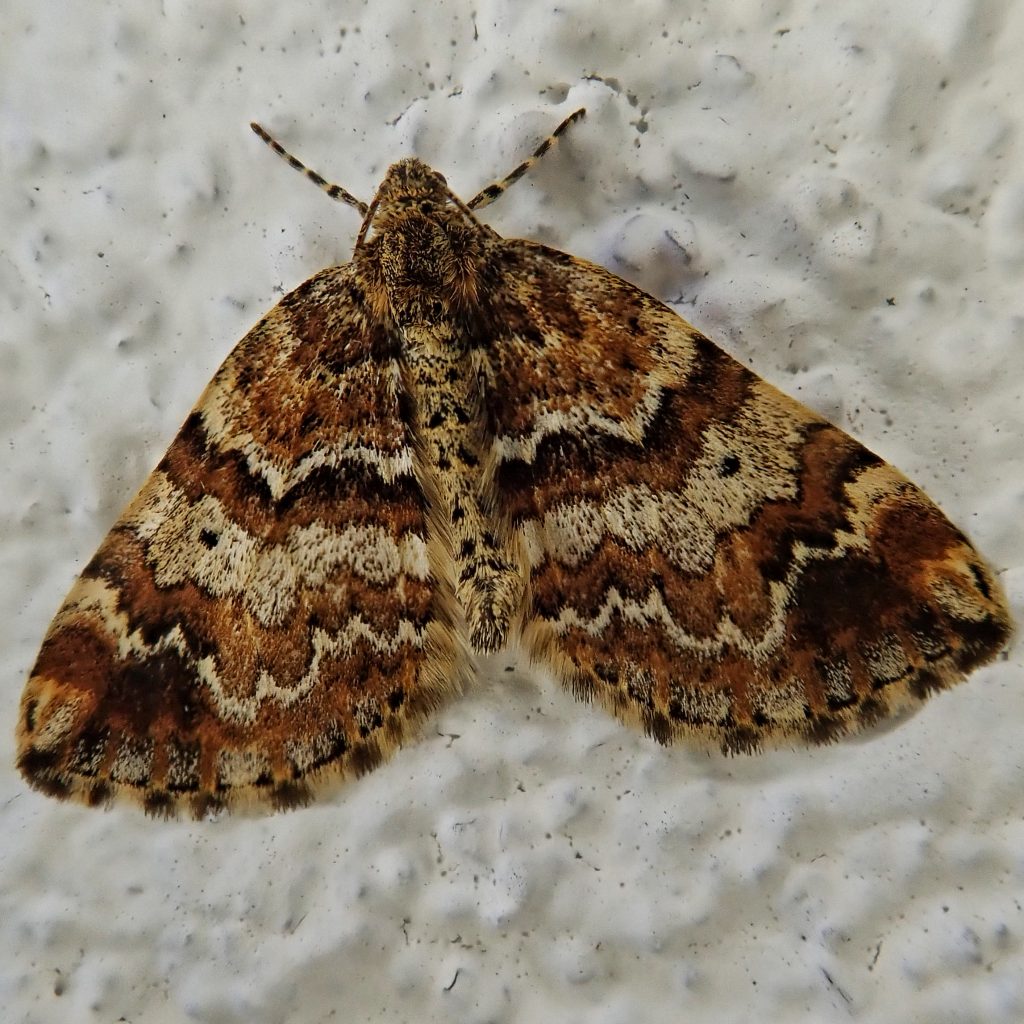
Similar species– Geometrids all look the same. Not really, but it can seem that way. Too many similar species to list even a decent fraction; Perizoma grandis flies later, lacks discal spot, is lighter brown, and has scalloped rather than zigzag transverse lines; Epirrhoe plebeculata has the discal spot on a brownish/greyish field, the transverse lines are less sharply pointed, and the hindwing is yellow orange.
Habitat– Openings in moist to mesic forests containing Claytonia, Montia, or Petasites frigidus.
Range– Endemic from the eastern slope of the Cascades to the Pacific.
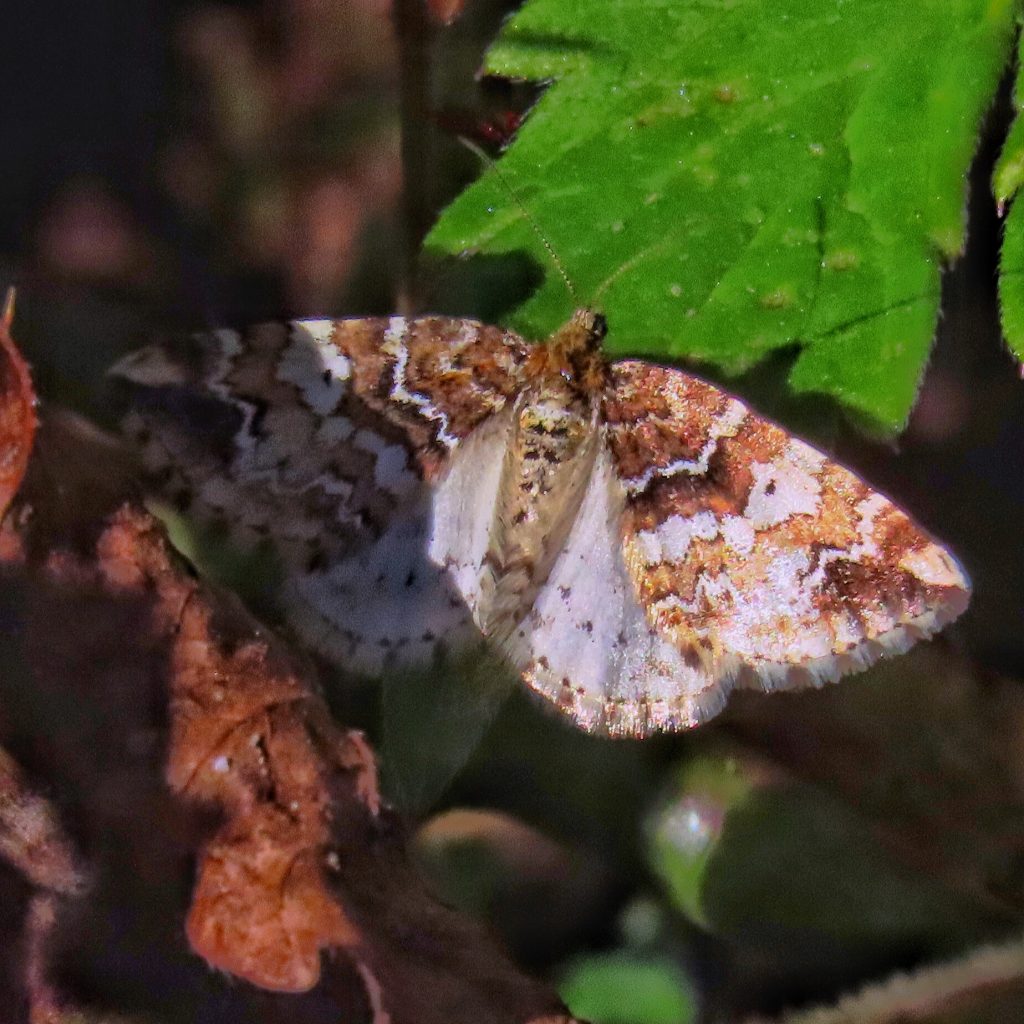
Eats-Larval hosts are various species of miner’s lettuce (Montia, Claytonia),and Petasites frigidus (coltsfoot). Adults nectar on the same plants, as well as many others.
Adults active– February through May
Etymology of names– In his 1896 description of the genus Enchoria, GD Hulst gives no clues as to what the word references. It could be from a Greek word meaning ‘native’ (literally ‘in country’), but that word is usually used to describe colloquial speech in general, and the non-hieroglyphic (demotic or popular) writing of ancient Egypt in particular. It could also reference the Latin word for ‘spear-like’. But, alas, I cannot even make an educated guess. The specific epithet lacteata is much more straightforward. It is Latin for ‘milky’, and refers to the color of the hindwing.
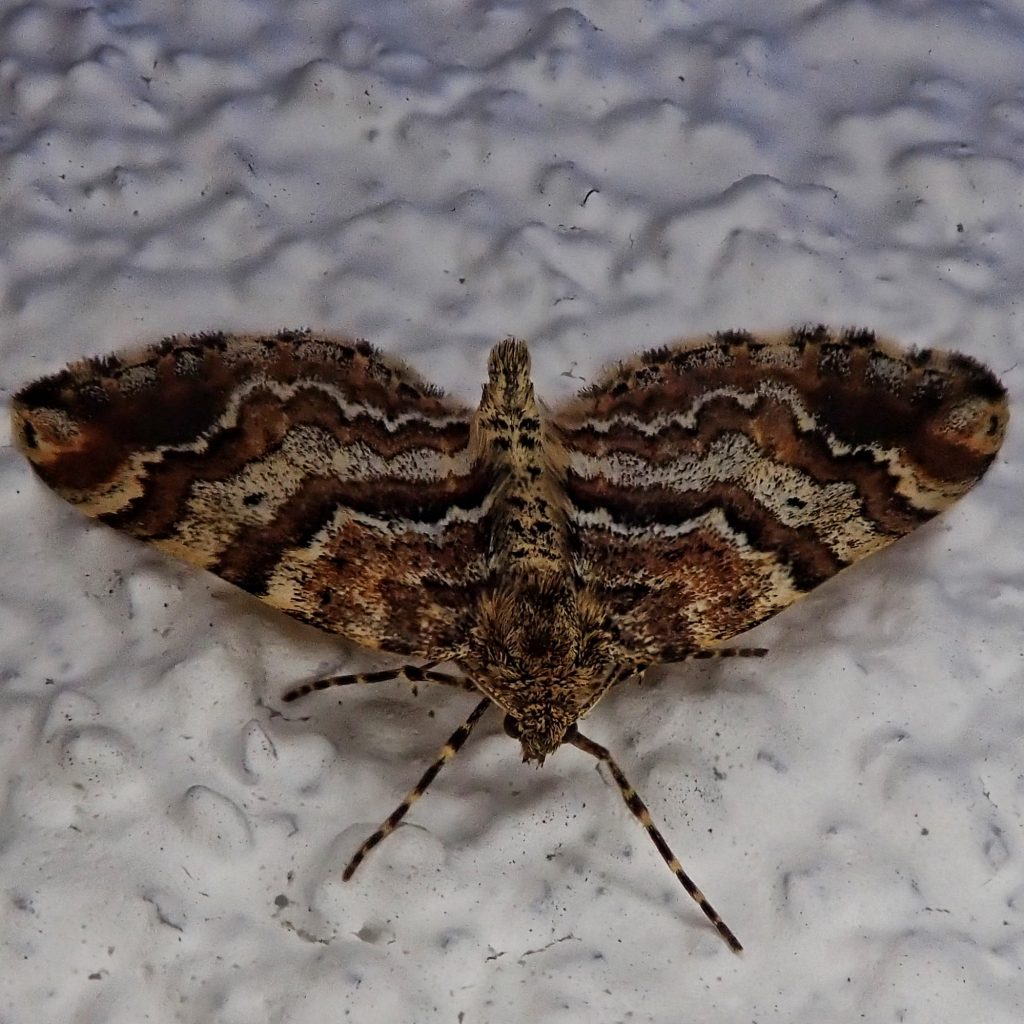
https://bugguide.net/node/view/46115
http://mothphotographersgroup.msstate.edu/species.php?hodges=7403
https://buggingyoufromsanjuanisland.com/category/enchoria-lacteata/
https://leps.fieldguide.ai/figures
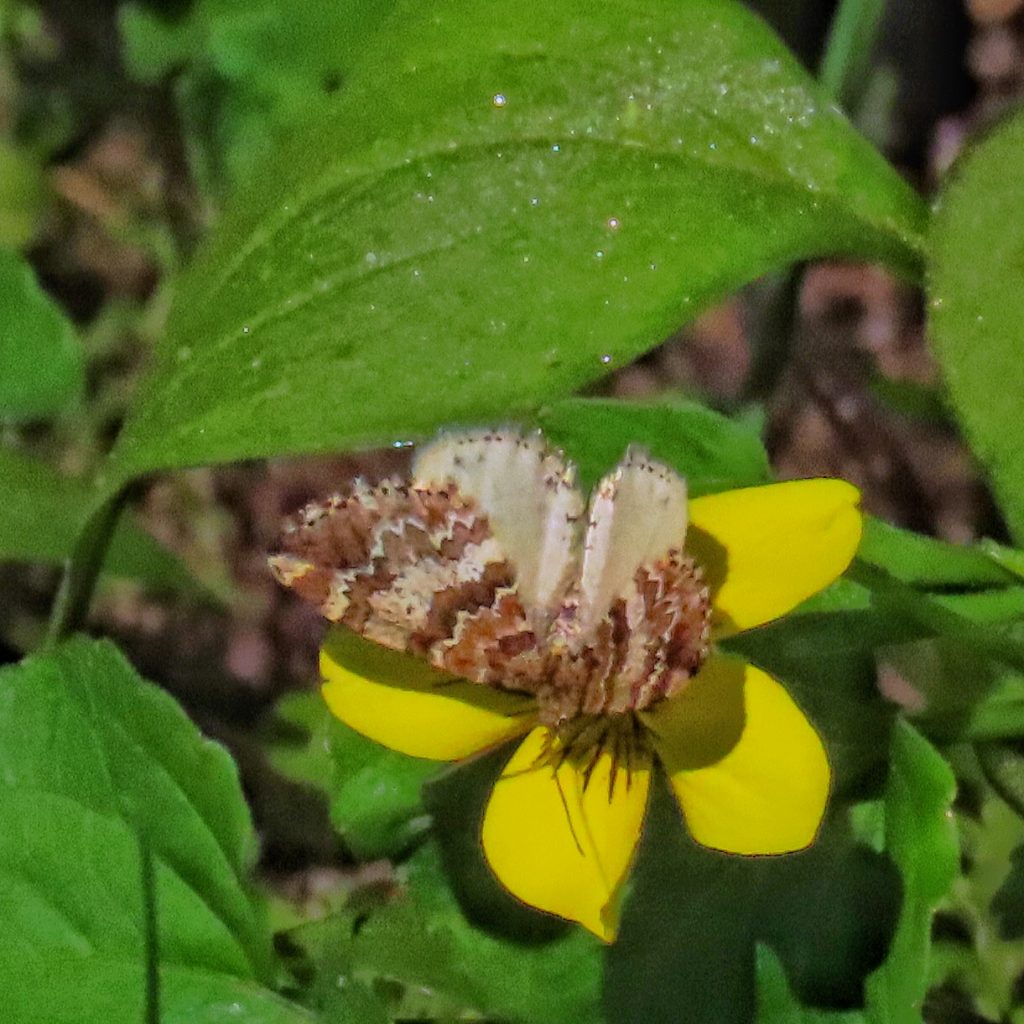
Beautiful photos!
Thanks, Allison!
Stunning! Do not have Enchoria, but it resembles our eastern Anticlea vasilata.
Yes, those Anticlea vasiliata can resemble almost anything in that family. They are serious when they call them variable! I did a profile about them several months ago. They also feature in the post I wrote about mothing.